In terms of life expectancy for its citizens, in recent decades Taiwan has caught up with and overtaken a number of Western countries. According to the most recent edition of the CIA’s World Factbook, Taiwanese now live longer than Americans, Czechs and Poles. Of course, the ongoing COVID-19 pandemic may shake up the rankings.
Taiwan’s single-payer healthcare system, set up in 1995, is one reason why people here can stay healthy for a long time. Before the postwar Chinese Nationalist Party (KMT) regime introduced the piecemeal health-insurance schemes (covering government employees, farmers, and others) that preceded the universal system, sick people often had to bear all the costs of treatment.
During the late 19th and 20th centuries, countless Taiwanese benefited from free medical services provided by Christian missionaries. The most famous of these foreign medics was George Mackay, a Canadian Presbyterian based in Tamsui (淡水), now part of New Taipei City, from 1872 until his death in 1901.
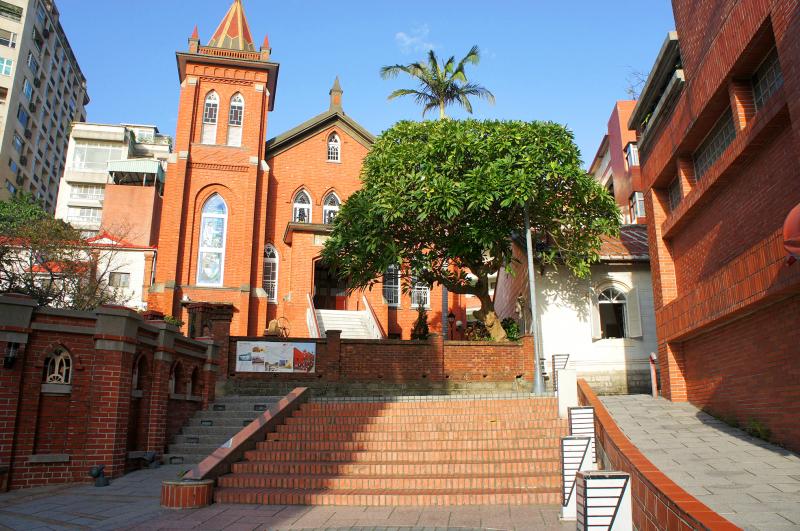
Photo: Lai Hsiao-tong
Mackay, who is especially renowned for removing thousands of rotten teeth, devoted a chapter of his book From Far Formosa to medical practices in Taiwan prior to the Japanese takeover (1895-1945). In that era, anyone could claim to be a physician.
“There are no authorized schools of medicine, no examinations, and no degrees. Custom is the only law, and success the only diploma,” Mackay wrote.
Offering an alternative to what he called “ignorant quackery,” Mackay founded a clinic at 6 Mackay Street in Tamsui. The original single-story Fujian-style building, completed in 1879, is still standing. At normal times, it’s open to the public 11am to 6pm from Monday to Thursday and from 11am to 9pm from Friday to Sunday. (New Taipei City Government announced a 14-day “coronavirus closure” of public facilities including museums from March 20. This could be extended, so call (02) 2629-2515 before visiting.)
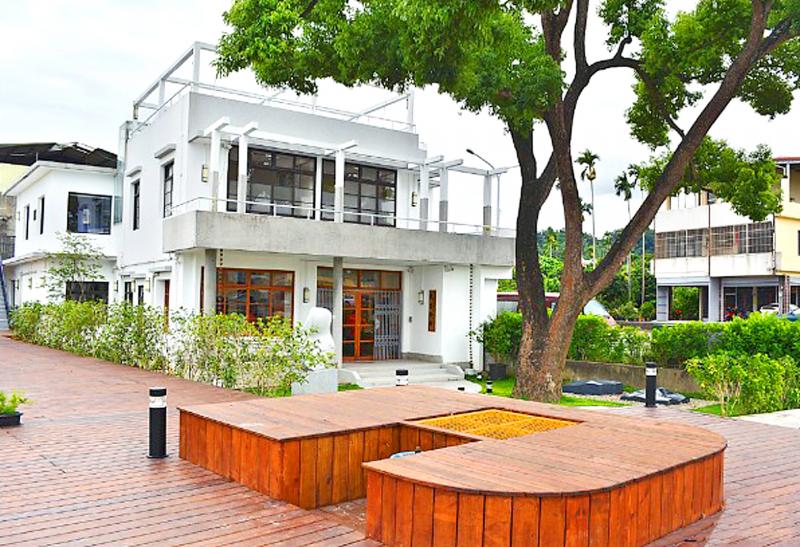
Photo: Chen Chien-chih, Taipei Times
Hobe Mackay Hospital (滬尾偕醫館), as the clinic was known, is the forerunner of Mackay Memorial Hospital (馬偕紀念醫院) in Taipei. Hobe is the Taiwanese pronunciation of Tamsui’s old name, Huwei (滬尾). If you’re able to get inside, you’ll find displays about Mackay and his work, old medical instruments, and other interesting artefacts.
RURAL CLINICS
Just as population outflows and improved transportation links have led to the closure of several schools in Taiwan’s countryside, many clinics and pharmacies in rural areas have also been wound up.
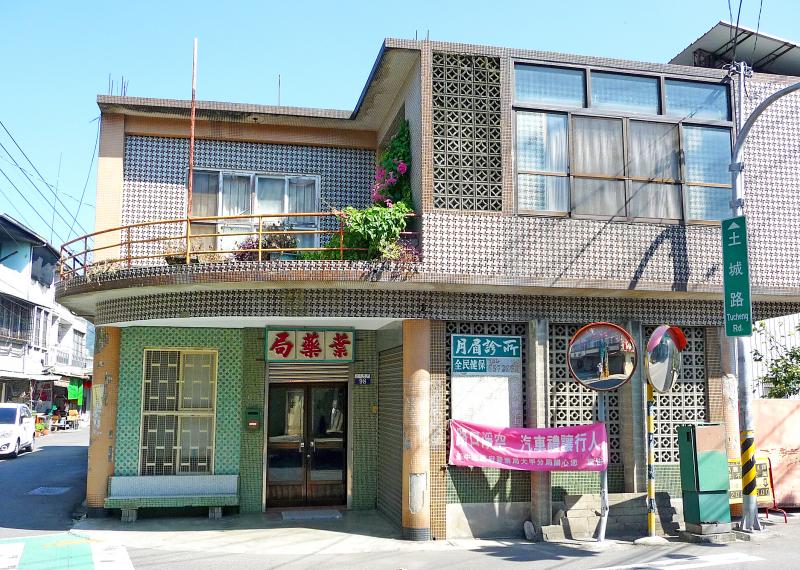
Photo: Steven Crook
One I stumbled across by accident is in Taichung’s Waipu District (外埔區). Yeh’s Drugstore (葉藥局), at the intersection of Tucheng Road (土城路) and Tucheng West Road (土城西路), looks as though it was built in the early 1960s.
When I was there earlier this year, the building had shed a few wall tiles, but otherwise looked fairly well maintained and still lived in. Curious if the layout of the front room hinted at its former role, I peered inside. There was nothing resembling a prescription window; it looked like the living room of any cultured, well-to-do family.
About 40km due south of Yeh’s Drugstore, Minsheng House of Microhistory (霧峰民生故事館) was constructed in the late 1950s to be both the home and the workplace of a physician named Lin Peng-fei (林鵬飛, 1920-2010). It’s currently open 9am to 5pm Tuesday to Sunday; call (04) 2339-1556 to confirm before traveling.
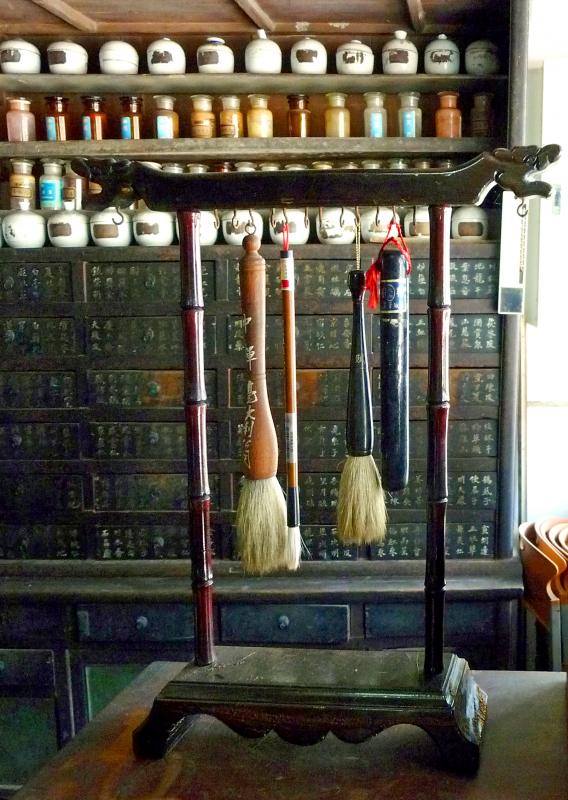
Photo: Steven Crook
Some years after the general practitioner’s death, this two-floor concrete building — not far from the 921 Earthquake Museum of Taiwan (921地震教育園區) in Wufeng District (霧峰區) in the southernmost part of Taichung — was purchased by the local farmers’ association. Following a thorough renovation funded by the association, some of the rooms were turned into exhibition spaces.
A few of the items on display were used by Lin himself. Others were donated by some of Taiwan’s most notable medical-intellectual families.
An upstairs room focuses on the sinking of the Shinsei Maru on Jan. 12, 1945. The Japanese vessel was sailing toward Indochina when it was attacked by US warplanes. There were 247 Taiwanese, among them 41 doctors, were among those killed; several had been Lin’s classmates in the medical school of Taihoku Imperial University (now National Taiwan University). Amid the maps, photos, and models, there’s a Rising Sun flag autographed by Taiwanese servicemen.
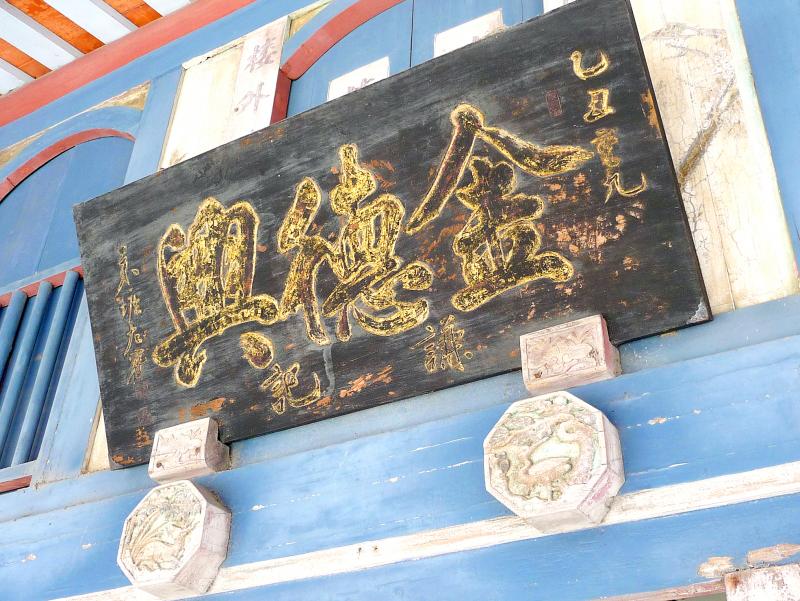
Photo: Steven Crook
DRUG STORES
Traditional Chinese Medicine (TCM) is still popular in Taiwan, even though the number of TCM apothecaries has halved since the late 1990s. What is possibly Taiwan’s most attractive former TCM clinic is in Houbi District (後壁區) in Tainan.
What’s variously known as the Ruan Family Old House (阮家古厝) or Jing De Hsing Drug Store (金德興藥舖) is at no. 191 on Jingliao Old Street (菁寮老街), a thoroughfare rich in old-time character.
It’s claimed the building has been here since at least 1795. If that’s true, it’s obviously undergone extensive remodeling and rebuilding. Concrete wasn’t used for construction until the Japanese period, yet four concrete columns support the eaves at the front. The entire facade is wood, however, as is the greater part of the side and back external walls. Because of Taiwan’s climate — and its voracious termites — very little woodwork lasts more than a century.
How much, if any, of what stands today is original doesn’t matter. This is a highly alluring one-and-a-half-story structure. Each time I come here, I study the woodcarvings and painted panels that face the street. Inside, there’s a steep, narrow staircase up to the attic (off limits to visitors). In the days of old, the upstairs would have been used for storage or as sleeping quarters.
No one has purchased medicine at Jing De Hsing Drug Store for a very long time. Nonetheless, the tools of the Chinese herbalist’s trade remain in place. There are mortars and pestles; vials, jars, and bottles; and sets of drawers labeled so the physician could quickly find what he needed.
Many of the labels are so faded as to be illegible, but those who can read Chinese will notice drawers set aside for: dried “land dragon” (地龍干, eviscerated earthworms, thought to be effective against pain and certain kinds of arthritis); spider brake (鳳尾蕨, the herb of a fern); and Perilla frutescens (紫蘇梗, a species related to mint; after drying and slicing, the stem is used to treat vomiting and stomach cramps).
Ruan Family Old House belongs to descendants of the last TCM doctor who practiced here. Generously, they usually keep the door open and don’t mind outsiders looking around. If you arrive and it’s locked up, all you can do is hope it’ll be open next time you’re in the area.
Steven Crook has been writing about travel, culture, and business in Taiwan since 1996. He is the co-author of A Culinary History of Taipei: Beyond Pork and Ponlai, and author of Taiwan: The Bradt Travel Guide, the third edition of which has just been published.

That US assistance was a model for Taiwan’s spectacular development success was early recognized by policymakers and analysts. In a report to the US Congress for the fiscal year 1962, former President John F. Kennedy noted Taiwan’s “rapid economic growth,” was “producing a substantial net gain in living.” Kennedy had a stake in Taiwan’s achievements and the US’ official development assistance (ODA) in general: In September 1961, his entreaty to make the 1960s a “decade of development,” and an accompanying proposal for dedicated legislation to this end, had been formalized by congressional passage of the Foreign Assistance Act. Two

Despite the intense sunshine, we were hardly breaking a sweat as we cruised along the flat, dedicated bike lane, well protected from the heat by a canopy of trees. The electric assist on the bikes likely made a difference, too. Far removed from the bustle and noise of the Taichung traffic, we admired the serene rural scenery, making our way over rivers, alongside rice paddies and through pear orchards. Our route for the day covered two bike paths that connect in Fengyuan District (豐原) and are best done together. The Hou-Feng Bike Path (后豐鐵馬道) runs southward from Houli District (后里) while the

March 31 to April 6 On May 13, 1950, National Taiwan University Hospital otolaryngologist Su You-peng (蘇友鵬) was summoned to the director’s office. He thought someone had complained about him practicing the violin at night, but when he entered the room, he knew something was terribly wrong. He saw several burly men who appeared to be government secret agents, and three other resident doctors: internist Hsu Chiang (許強), dermatologist Hu Pao-chen (胡寶珍) and ophthalmologist Hu Hsin-lin (胡鑫麟). They were handcuffed, herded onto two jeeps and taken to the Secrecy Bureau (保密局) for questioning. Su was still in his doctor’s robes at

Mirror mirror on the wall, what’s the fairest Disney live-action remake of them all? Wait, mirror. Hold on a second. Maybe choosing from the likes of Alice in Wonderland (2010), Mulan (2020) and The Lion King (2019) isn’t such a good idea. Mirror, on second thought, what’s on Netflix? Even the most devoted fans would have to acknowledge that these have not been the most illustrious illustrations of Disney magic. At their best (Pete’s Dragon? Cinderella?) they breathe life into old classics that could use a little updating. At their worst, well, blue Will Smith. Given the rapacious rate of remakes in modern